Every two years, the world takes part in a figurative dance that’s been decades in the making. First, it’s the iconic passing of the torch. Then, an epic, national-pride-filled opening ceremony. And, finally, it’s the moment we’ve all been waiting for. The holiest and most timeless of Olympic traditions: It’s time to mock the mascots.
Mascot hate has been popular since the very first, unofficial mascot made its way into the spotlight back in 1968. Not a single mascot has come out totally unscathed in the years since — and rightly so! Most, if not all, are bizarre to behold, and guessing their provenance is often all but impossible. This year’s crop is no different:
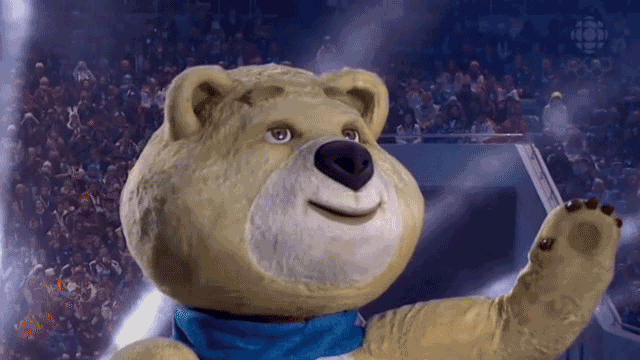
Officially dubbed Bely Mishka, but known to the masses only as “Nightmare Bear”, Sochi’s animal friend of choice is fast on the path to being remembered for its dead eyes, troubling stumble, and… that’s about it. It’s like a demonic Charmin bear on quaaludes.
So what is it about Olympic mascots that makes them so absurdly creepy? Good question. One that, believe it or not, has a reasonable answer.
Not Entirely Humble Beginnings
The first Olympic mascot was basically a Pez dispenser without the Pez — or, as the majority of the population referred to it, a red-faced sperm on skis. Born in 1968, this snow-bound, armless wonder was part athlete, part toy, and everything a marketing team could ever hope for.
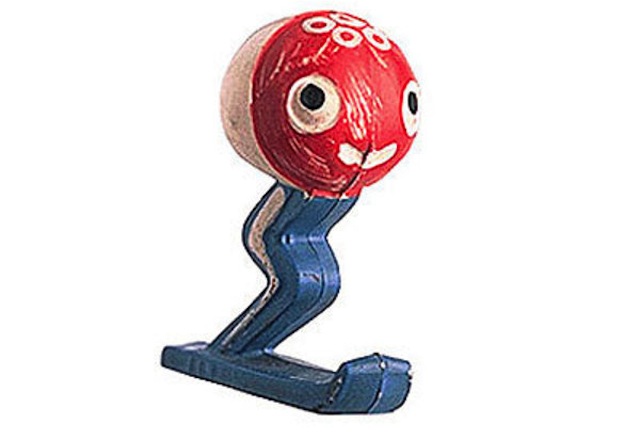
Gernoble Winter Olympics, 1968; designed as a skier, referred to as “sperm on skis.”
The thing is, Schuss wasn’t even an official mascot. Made by the Films and Promotion studios in Paris, the so-called “skiing sperm” apparently so delighted Grenoble Olympics-goers that the organising committee decided to legitimise (read: capitalise on) this novelty of an otherwise very serious sporting event.
So in 1972, mascots were officially incorporated into the proceedings. Munich’s Summer Games saw the first ever inclusion of an official Olympic mascot in the form of Waldi, a long-haired Dachsund featuring every colour every non-socialist-aligning colour of the Olympic rings.
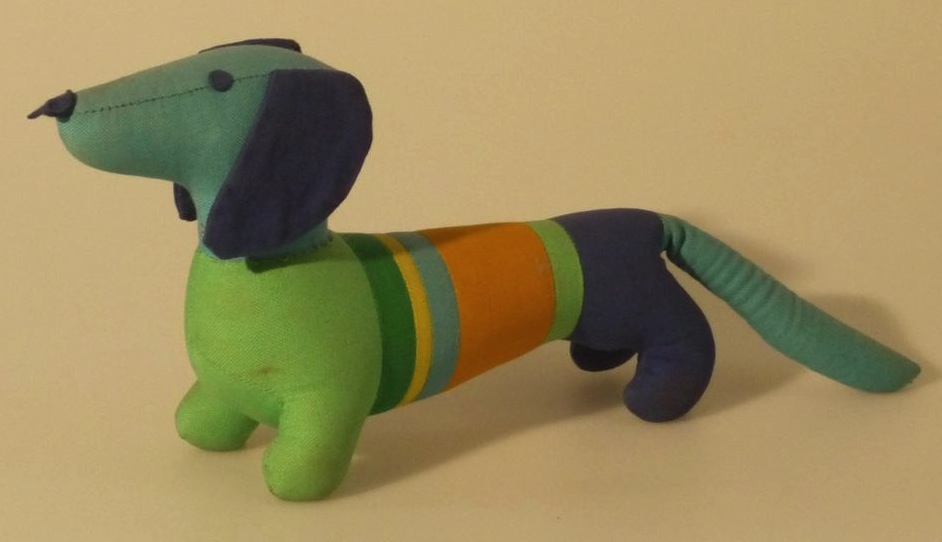
Waldi; Berlin Summer Olympics 1972.
Even though Waldi’s only facial feature was his beady little eyes, and even though he didn’t lend himself to any sort of live-action costume, and even though he had about as much personality as a curling enthusiast, Waldi made the crowds go wild. That year, the Olympic committee sold over two million items fashioned after the pup, including plush toys, buttons, posters, stickers, and even a Waldi pin.
After seeing how much people loved (spending obscene amounts of money on) mascot-related items, future organisers were more than happy to embark on what would soon become the long, harried tradition of the Olympic mascot. Just as the modern-day Star Wars films saw Jar Jar Binks, the modern-day Olympics saw — well, dozens of Jar Jar Binkses.
A Mascot for the Everyman
Ideally, the Olympics are about putting differences aside and coming together to celebrate the one thing that we all share — the human form. But of course, the Olympics are also about winning, and showing the world how much stronger, faster, and better you are. It’s part of why we campaign so hard to be able to host the Games in the first place. And if your country does receive the honour of playing host to hundreds of notoriously sex-crazed Adonises and Amazons, you’re going to want to rub it in it the world’s face every chance you get. That means memorable venues, ceremonies, and mascots alike.
But the mascots we end up with are never entirely of a country’s own choosing. If it were, we’d get Uncle Sam making sweet love to a bald eagle every time the Olympics were held stateside. Instead, the IOC picks from a pool of designers, and has the authority to tweak the winning look to its liking. Any mascot designer hoping to be picked by the committee must tread lightly when it comes to potential perceptions of race, ethnicity, and gender. In other words: Don’t piss anyone off.
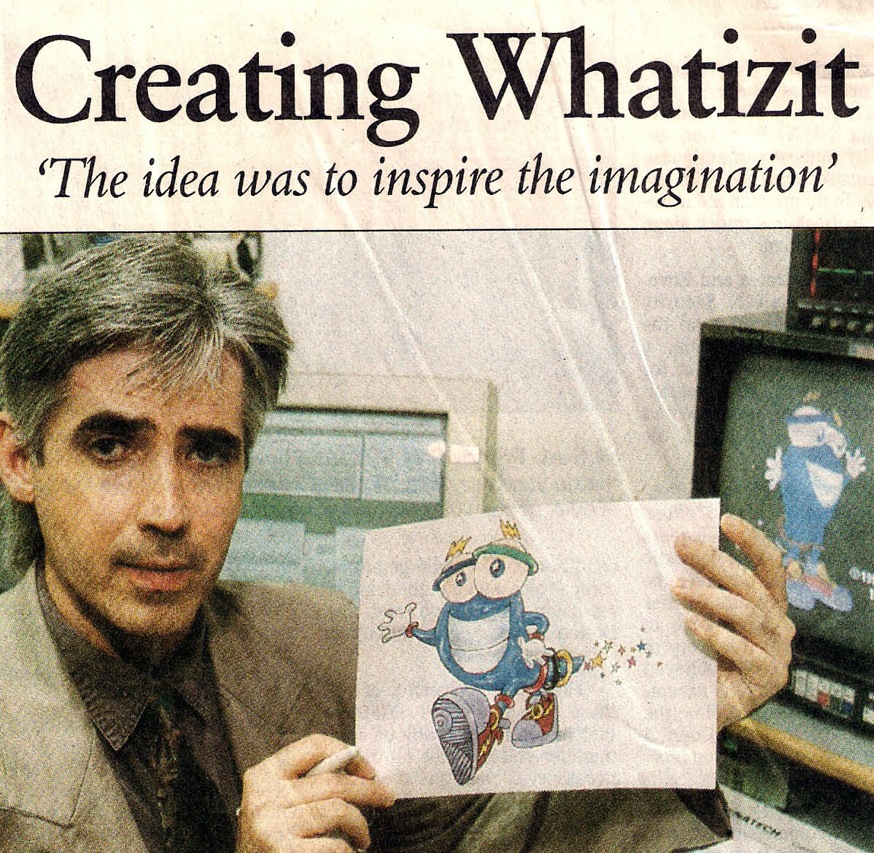
Izzy; Atlanta Summer Olympics, 1996; was described by the public as everything from “sperm in sneakers” to “a bad marriage of the Pillsbury doughboy and the ugliest California Raisin.” Photo courtesy of John Ryan.
In a conversation with Gizmodo, John Ryan, Director of Dagnabit Animation and creative mind behind the 1996 Atlanta Olympics’ mercilessly mocked Izzy, described the experience of interacting with the varied demands of the committee:
When the tentative design problem was set forth, [the committee] said it should be something that would appeal to children but also have an international kind of scope. And they wanted us to make it not obvious whether the character was male or female. Whenever you do that — while I think it’s well-intentioned to want to focus on overall appeal — that’s always going to be hard to put into words.
This sort of hyper-sensitive political correctness may seem like overkill, but it’s certainly understandable why Olympic marketers would want to err on the side of caution. Pleasing everybody all of the time is no easy feat.
It also by definition necessitates that instead of ending up with a mascot that’s relatable, you’re going to get an amorphous — and unlovable — non-human… thing. Not exactly conducive to expectations of a cartoony-yet-noble, ideally athletic patriot available for purchase in plush form.

Phevos and Athena; Athens Summer Olympics 2004; were supposed to be inspired by ancient Greek dolls, but were referred to as “phallic” by the media.
Put in those terms, it’s hard to imagine any sort of mascot scenario that would make a majority of Olympics-goers happy. And in reality, Olympic planning committees don’t really care about producing a mascot that makes you feel warm and fuzzy inside. Now, making your kid feel warm and fuzzy? Well, that’s a different story all together.
Think of the Children
Remember, this whole mascot business started as one big marketing ploy. Stuffed animals, action figures, clothes, cartoons, colouring books; slap an Olympic mascot’s face onto a product and it’s going to fly off the shelves. Kids are far more accepting when it comes to anthropomorphic, genderless blobs. In fact, they actively enjoy them!
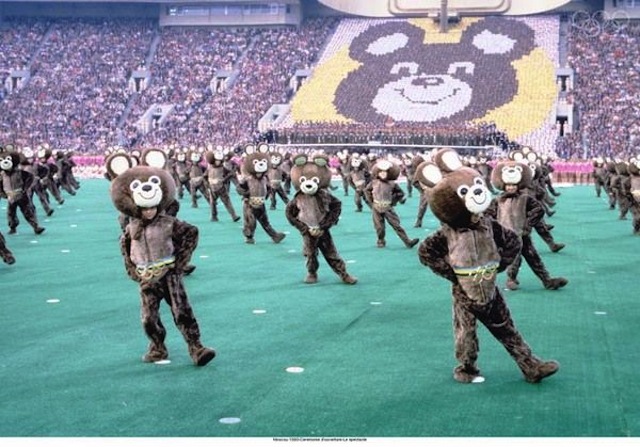
Misha; Moscow Summer Olympics 1980; was supposed to be a Russian bear. She was described as “calmly unsettling.”
Here’s how Peter McGraw, Associate Professor of Marketing and Psychology at the University of Colorado Boulder and co-author of upcoming book The Humour Code, explained to Gizmodo why adults and children feel so differently about mascots:
The problem is that the mascots aren’t designed to make the average adult around the world happy. They exist for children’s sake. The idea is that the Olympics want to engage children. Because if children manage to grow up not caring about the Olympics, then they’ll become adults who don’t care about the olympics. It’s all just a vehicle to sell merchandise.
The thing is, kids are just more accepting of how peculiar these [mascots] can be. Look at kids’ toys, for instance. Through history kids have become enthralled with weird toys and dolls and so on, despite the fact that Cabbage Patch Kids, Furbies, and even Elmos are not exactly appealing characters. So kids have a much wider latitude of acceptance when it comes to these things.
What’s more, adult’s already have an Olympic visual touchstone; the five multi-coloured, interlocking rings acting as our widely accepted symbol of Olympic gravitas and dignity. And despite our general predilection for railing on mascots, children — tasteless heathens that they are — really do seem to love them on a consistent basis.
No better example of this exists than the much-derided, cyclopean Wenlock and Mandeville of the 2012 Olympic Games in London. Conceptualized as two drops of molten metal that escaped just before becoming a permanent part of the new 2012 stadium (which raises all kinds of questions of how many dead mascots it took to build), the wide- and single-eyed figures were meant to be the first mascots tailor-made for the digital age. And while us olds immediately made unsettling connections between the mascot’s all-seeing, unblinking giant camera eye and Big Brother, kids — you know, the actual intended audience — ate them up.
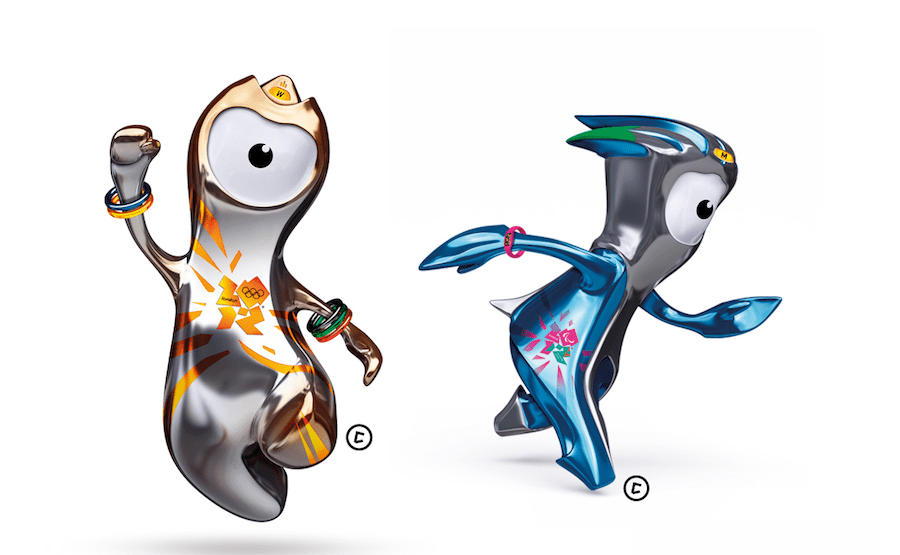
Wenlock and Mandeville; London Summer Olympics 2012; were inspired by molten drops of steel, but referred to as “Pixar rejects,” and “Big Brother.” Photo courtesy of Grant Hunter.
As Grant Hunter, the designer behind the now notorious Wenlock and Mandeville, told Gizmodo:
We knew that if we departed from tradition there were bound to be some who would reject the ‘change.’ Our creations polarised people, and there would have been nothing worse than them being ignored. But more importantly the target audience loved them. The kids liked our designs because they stood out, they weren’t just a ‘fluffy animal. If you look at sites like the BBC’s CBBC you’ll see the overwhelming positive feedback that Wenlock and Mandeville received. When you have 8 year olds saying how cool they look and they want them to visit their school we knew we’d done our job.
So. Kids are generally, demonstrably happy with these mascots. We adults already have a more elegant, primary symbol of the Games. You’d think that would be the end of it. And yet! Mascots continue to creep us out.
The Winners of Our Discontent
If we’re being honest though, laughable, absurd, and even terrifying mascots make for some of the most memorable aspects of the Olympics. Do we remember who won Women’s Curling back in 2010? Hell no. But we remember Pedobear’s glorious and all-too-brief moment in the Olympic sun like it was yesterday.
Thanks to a combination of lazy Googling and an uncanny similarity to the actual Vancouver Olympics mascots, a petulant Pedobear — the 4chan-bred internet meme — managed to slide past the editors of a Polish newspaper and straight onto its pages. It was one of the most entertaining moments of the games:
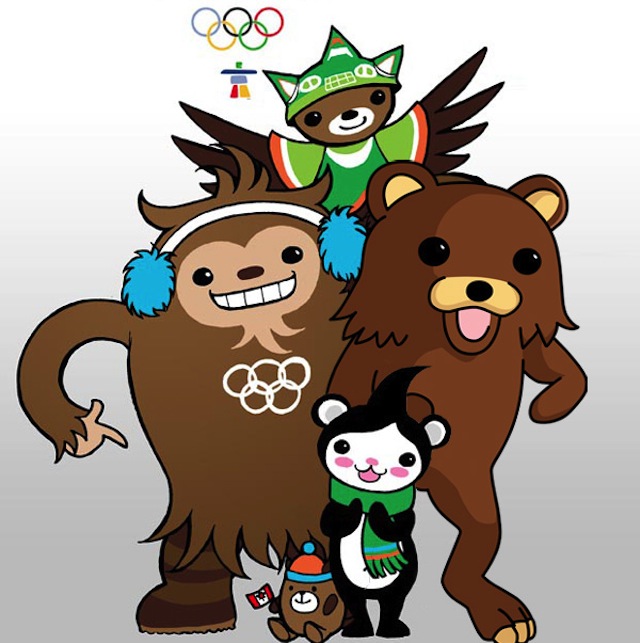
Miga, Quatchi, and Sumi; Vancouver Winter Olympics 2010; shown here with Pedobear.
And that’s just for starters. Remember Wenlock and Mandeville? They managed to bring out the crazy something fierce. This delightful Illuminati/New World Order/Antichrist expose website is something each individual should experience for him or herself, but the short version is that London’s 2012 Olympic mascots happen to be essential tools of the Illuminati Occult. Can’t argue with facts:

Oh, and their joint names are an anagram for “WE UNLOCK MAD DEVIL.” You know, science.
So remember the next time you hate an Olympic mascot that it’s not for you, and it’s not a conspiracy. That doesn’t mean we should stop mocking them, though. The Photoshops are just too good.

